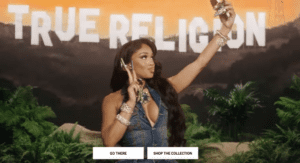The chorus of doom-mongers has risen in volume for years now: advertising no longer works, the channels have fragmented, the mainstream has vanished, media has commoditized, we are ripe for disruption, and thanks to Big Data—we now know everything and understand nothing.
Even if this were all true—and we could argue all day about it—it still sounds like excellent news to those of us who got bored of traditional advertising long ago. It is excellent news because it means the game is changing, and we are going to have to change, too.
Because those 30-second movies we’ve been making simply don’t cut through any more. People aren’t watching, and when they are, they’re also ignoring—in the form of ad blockers and ad-free premium tariffs. And here’s another truth: if those 30-second movies had any value in peoples’ lives, they wouldn’t block them. They’d demand more of them.
And there’s the thing: adding value to peoples’ lives. Understanding their daily realities, recognizing what it means to be in their shoes, creating ways to help them and demonstrating that we’re in their corner. Switch the emphasis, from brand need to human need. Forge a more lasting and meaningful connection. Make like JFK: ask not what people can do for your brand, ask what your brand can do for people.
I’m not the only one talking about this. But, I consider myself fortunate to be part of a movement that recognizes the shifting landscape and is ready with a solution: experiences and experience creation.
My favorite dead pop star, Harry Nilsson (ask your parents, or grandparents), once said that “experiences are springboards to the imagination.” Maybe that’s why people are demanding more of them. Or, maybe the digital age has made the “real” something we yearn for more than ever. Or maybe it’s because we are a super-sensory and highly social mammal that wants to hang out together and feel our goose-bumps prickle. Whatever the reasons, we love experiences, and we want more of them—so much so that a report by Cornell University concluded that humans value experiences more than anything else (including material possessions). So, let’s get on and create some! Here are 5 golden rules of experience creation:
The human need, not the brand need. A consumer segmentation model might identify who you’re trying to reach, but it won’t help you find the right way to reach them. The good news is that this is not rocket science. There is an abundance of need-state hierarchies, mental health and wellbeing scales, and easily digestible human psychology reports to help you nail this. What do people want? What will make them laugh, lighten their load, reduce friction in their lives, give them hope? You’ll need to do some research of your own, plus you’ll need empathy and some common sense. If you lack any of that, ask a colleague.
Rule 2: You Don’t Have to Spend Big, Just Spend Smartly
The word “experience” often conjures up images of big live events, festivals, partnering with properties and rights holders, mobilizing a small army of producers and technicians, local crew, security, and on and on. It doesn’t have to be like that, and you shouldn’t be brokering any deals until you know what you’re setting out to achieve. Figure out your story first. Get a clear handle on what your audience is going to get out of all this. Chances are, you’ll find that simple is best, and significant cut-through can happen without spending your entire marketing budget.
Rule 3: Virality Can’t be Forced
“Make it go viral,” they say, and another tail wags another dog. It simply doesn’t work like that. Try making it amazing and full of value, and people are going to share it. You may not even need to devise a social media strategy—it’ll simply happen. Our own research says that 24% of young people view sharing on social media as the main reason they go to events and experiences in the first place. A whopping 72% told us that they’ll definitely share it if it resonates. There’s your virality.
Rule 4: Brand Ambassadors are a Liability as Much as an Asset
One of the quickest ways to expose inauthenticity and undermine your experience investment is a poorly trained Brand Ambassador. Never over-estimate your brand ambassador’s capacity for retaining all the nuances of your brand, your product and your values. It took you months or years to learn it all, so if you train them on the morning of your event, good luck with that.
Rule 5: Experiences are Ripe for Disruption, Too
On Christmas Day last year, I took my parents onstage with Paul McCartney, toured an ancient Syrian mosque and then leapt off the Grand Canyon. The experience was exhilarating, incredibly bonding and cost about a dollar. Anybody who has spent more than a couple of seconds trying out Google Cardboard, Oculus Rift or any of the other myriad VR products knows that the very nature of the “live” experience just changed forever. If you’re not already investing in people who can help you navigate the possibilities, you’re going to get left behind.
Matthew Gidley is head of experiential marketing, North America, Momentum Worldwide.
Related articles:
Experiential Takes on Multiple Roles: Special Report
Engaging Millennials with Experiential Marketing: 4 Tips
Maximizing Live Experiences to Build Brands



 Network
Network

